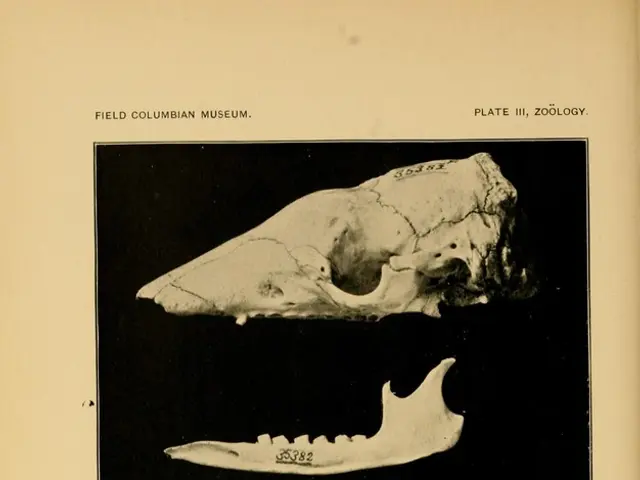Strategies for tackling canine obesity: Waging war against excess weight in dogs
Doggy Weight Woes: The Obesity Crisis Among Canines
Okay, so Fido's a bit portly, and he's not the only pooch packing on the pounds. Pet obesity is an escalating issue, and guess who's one of the worst-hit nations? Yup, you guessed it – us, the US of A. In 2018, a nifty study revealed that a staggering 59% of our furry companions were tipping the scales too much! That's a pretty hefty proportion, don't ya think?
Now, why's this a cause for concern? Well, research shows that your pet's weight can have a significant impact on their lifespan, and we all want our four-legged friends around for as long as possible. Unfortunately, excess weight is associated with several health conditions, such as arthritis, heart disease, diabetes, and yes, even cancer. So, instead of equating feeding with love, let's aim for a healthier, more active dog instead.
Seeing Spots: Evaluating Your Dog's Weight
Spotting a heavyweight dog can be tricky nowadays, what with so many chonky pooches walking around. Thus, compare Sparky to other dogs of his size or breed is like comparing apples to oranges. Instead, try to assess his body condition score, or BCS, for a more accurate picture.
A BCS uses a numerical scale to measure the amount of fat distribution on your dog's body. This individualized assessment is a better indicator of whether your dog needs to slim down. Your vet will often evaluate your dog's BCS at every visit, so don't hesitate to ask 'em for their two cents too.
Dialing Back the Feeding Bowl: A Diet for Weight Loss
If your dog needs to shed some pounds, the key lies in reining in those tasty morsels he gobbles up. Most weight gain comes from gobbling up too many calories on a regular basis. Remember to account for not just the calorie content of kibble, but also treats, chews, supplements, table scraps, and other extra nibbles.
Portion control is crucial! Treats should make up no more than 10% of your dog's daily calorie intake. Use a measuring cup or gram scale to dish out balanced meals to prevent your dog from overeating. If you're unsure about your pup's grazing habits, consult your vet – they can help estimate the right amount for your dog's weight loss journey.
Prescription Diets: A Helping Paw in Slimming Down
When regular portion control doesn't cut it, your vet might suggest trying a prescription weight loss diet. These special kibbles are carefully formulated to ensure your dog gets enough nutrients despite the lower calorie content. Some recipes are designed to help your dog feel full without gorging, helping him resist those droopy eyes and puppy dog looks.
Burn, Baby, Burn: Exercise for Slimming Down
Although diet is the primary weapon against weight gain, regular exercise can also help. Exercise burns calories, improves mobility, and builds strength – all great for slimming down. If your dog has been a couch potato, start his exercise routine slowly to build his endurance gradually. Consider low-impact activities like walking or swimming, as they're gentle on his joints.
As your dog sheds pounds and gains endurance, you can consider more strenuous activities like agility. Keep in mind that overweight dogs are more prone to overheating, so stay mindful of the weather when working out. Hydrate well before, during, and after exercise by providing fresh water.
Winning the Fight Against Fat: A Healthy Future Awaits
Losing weight can be a battle, but with patience and persistence, your dog can get back to a healthy weight. Make sure the entire family is on board with your dog's weight loss plan, and don't shy away from seeking your vet's advice and support. Remember, steady, gradual weight loss is key to ensuring your dog will lose weight and maintain a healthy size for the long haul. Happy slimming! 🐾💪👍☀️💦
- The escalating issue of pet obesity in the US includes a significant percentage of dogs, with approximately 59% of them being overweight in 2018.
- Maintaining a healthy weight for pets is crucial to their well-being, as excess weight can lead to numerous health conditions such as arthritis, heart disease, diabetes, and even cancer.
- Assessing a dog's body condition score (BCS) can provide a more accurate picture of their weight status, as compared to visual assessments against other dogs of the same breed.
- For a dog that needs to lose weight, regular portion control is essential in managing calorie intake, and treats should account for no more than 10% of their daily calorie intake.
- In some cases, prescription weight loss diets may be recommended by veterinarians, offering specially formulated kibbles with lower calorie content and restricted nutrient concentrations.
- Regular exercise can aid in weight loss while also improving a dog's mobility and strength, reducing the risk of further weight gain.
- By implementing a consistent weight loss plan, understanding the importance of nutrition and exercise, and seeking guidance from a veterinarian, pet owners can help their dogs reach and maintain a healthy weight for a longer, healthier life.








